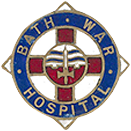A Soldier’s Story – Robert Stanley Morgan

2/5th (City of London) Battalion
The London Regiment (London Rifle Brigade)
In 1915, aged 27 and newly married, Robert Stanley Morgan enlisted in the Army. At the time of his wounding on the Thursday 20th September 1917 he was an acting Corporal in the 2nd Battalion the London Rifle brigade, 58th London Division. He was a Lewis Gunner. Early that morning his battalion attacked the German line north of Ypres.
As they advanced Corporal Morgan saw the men in front of him falling down. He dropped to the ground, and as he did so a German machine gun bullet went through his helmet and across the top of his head. When he came round he put on a field dressing, and after sheltering in a shell hole for a while decided, with two others who were also wounded, to take his chances and try to get through to a German pillbox that was being used as a dressing station. There he left his two more severely wounded comrades, and joined other walking wounded to make his way the 3 or 4 miles back to Ypres.

Once there he was taken by ambulance to a casualty clearing station outside Proven , then by train to the Australian Hospital near Rouen, where he arrived at about 11.30 Friday night. In a letter to his sister, written later from the Bath War Hospital recounting his experience, he recalls the journey as being one ‘triumphal progress of sandwiches, tea and cocoa galore; the best of attention’. He remained at the Australian Hospital until the 25th September, when he was sent to Le Havre and boarded the hospital ship Essequibo, arriving at Southampton on the morning of the 26th September.

From Southampton, Stan sent his wife a hastily written note saying that he was going to try and get sent to a hospital near Farnham. Unfortunately, the enormous number of casualties meant that injured soldiers were placed on the first available hospital train and sent to whichever town and hospital that had capacity to receive patients. Stan arrived at the Bath War Hospital at 5pm that same evening, 6 days after he was wounded.

Our knowledge of Stan’s story comes from a letter he wrote to his sister from the hospital on the 12th October 1917. In some ways it provides quite a graphic account of what he endured, especially as it was written to a woman, but in light of what we know now about the 3rd Battle of Ypres (Passchendaele) it is quite sanitized. We can only guess exactly what horrors Stan witnessed, but what he writes to his sister is telling:
‘I don’t want any sympathy at all for my Blighty. It came just in time to get me out of the autumn and possibly some of the winter campaign.’
He also comments that that ‘my head is healing rapidly, too rapidly I think, so I’m thinking of swinging the lead somehow. Shall try to get my teeth seen to while I’m here.’
Fortunately for Stanley Morgan, there was no return to the Flanders mud, and after his discharge from the Bath War Hospital his Lewis Gun experience was used to train new recruits in camps around the South of England.

A report in the Bath Chronicle on Saturday 29th September 1917 states that 210 soldiers arrived on the hospital train that carried Stan to Bath, with another expected soon after as the hospital still had another 200 beds available. The reporter comments that ‘very weary they looked, and they carried a good deal of French mud with them’.


Stan was admitted to Tent W2, one of the marquees that were erected in the grounds at Combe Park to expand the War Hospital’s capacity, and he said the hospital was a ‘heaven of clean sheets & good food & the best of attention. He also commented that the tents had ‘board floors, electric light etc.’



I can’t help wondering what my Grandad would have made of seeing his story remembered like this – 100 years later?
I remember him with affection and pride.
A fascinating story 100 years on, thank you for sharing!
What a lovely photo of your grandfather with his son Tony, perhaps your uncle?
Not my Uncle, my Dad!